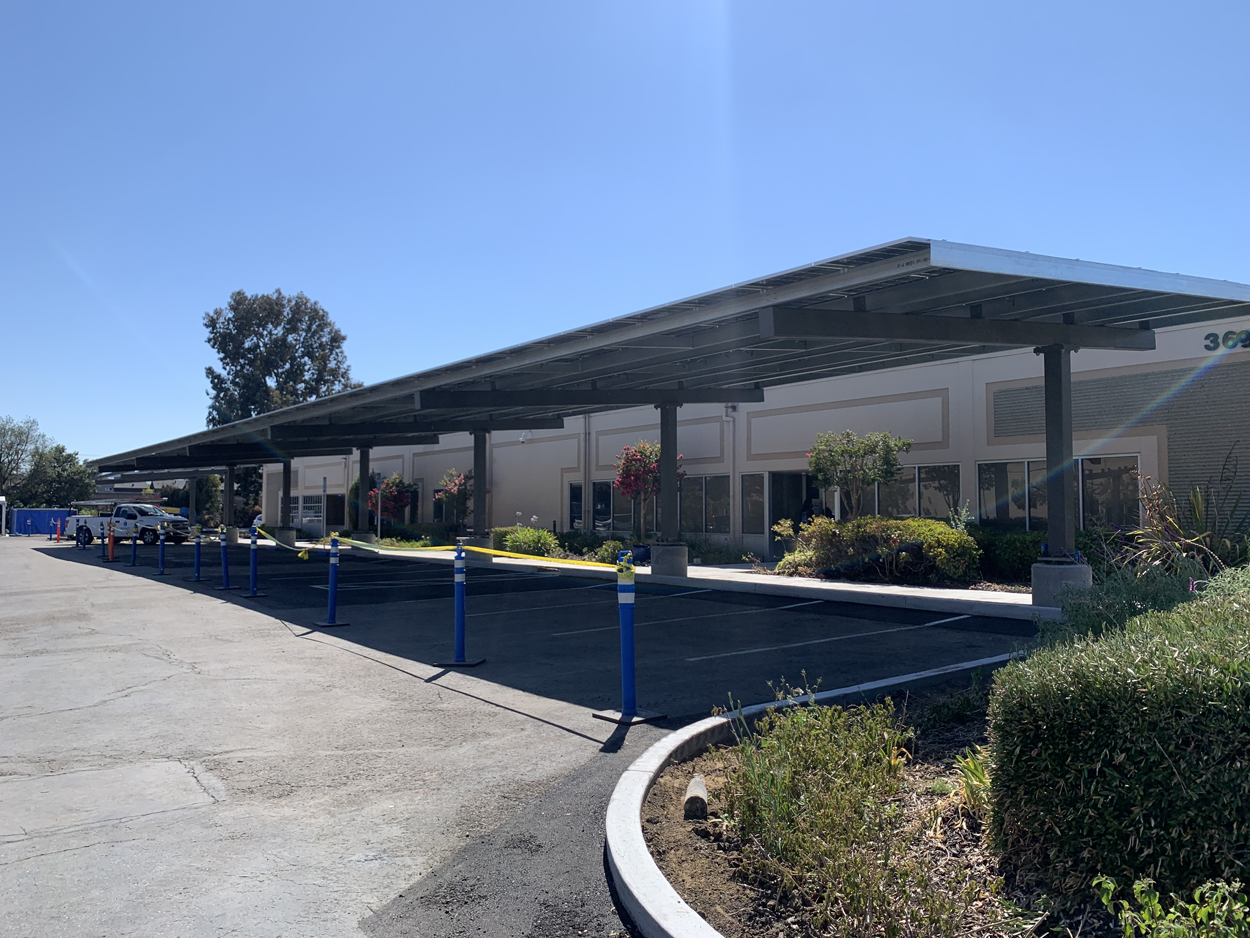Commercial real estate owner H&S Properties engaged SolarEdge to install a solar carport and rooftop array on a research and development campus in Redwood City, California. The facility is expected to lower on-site costs for electricity and cut carbon emissions, making the research center a more attractive location for businesses looking to cut costs and environmental impact.
The 623 kW system is expected to offset 78% of the research center’s total energy use and provide its four tenants a 10% discount of electricity. The SolarEdge DC-optimized system is forecast to produce 950,000 kWh each year. MYNT Systems installed the array.
“For building owners, the biggest issue keeping them up at night is the thought of properties lying vacant. Providing access to sustainable, lower-cost energy is incredibly appealing to prospective tenants,” said Robert Hymes, chief development officer, MYNT Systems.
The solar installation features 1,299 bifacial solar modules attached to SolarEdge power optimizers, two DC-optimized SolarEdge inverters, and a battery for energy storage. The optimizers help boost production by overcoming traditional string inverter related issues in shading, module degradation and soiling. The optimizers also enable design flexibility around module layout and placement, getting more productive area out of the rooftop and carport space.
The SolarEdge system is able to monitor each pair of modules independently and in real time. This approaches the monitoring and operational granularity of microinverters, which can monitor each individual module, but retains the string inverter level of conversion efficiency. Conversion efficiency is typically a percentage point or two higher than its microinverter counterparts.
The granular view into module production helps identify any potential issues with the system, leading to fast repair responses and limited downtime, said SolarEdge.

For the real estate owner, this translates to a more attractive long-term cost for electricity, sweetening the pot for both the property owner and tenant. It also helps to boost the value of the property, while being exempt from increased property taxes in most states.
“Solar is much more than a technology that reduces energy bills – for [commercial real estate companies] it actually provides an opportunity to increase the value of their buildings,” said Hymes.
“When speaking with clients, we tend to talk less about kW per hour production and more about the impact solar has on rental prices and tenant retention,” he said. “Our clients are not solar experts, but they understand those metrics very well. By speaking the industry’s language, we are able to convey the advantages of solar power to a much wider audience.”
This content is protected by copyright and may not be reused. If you want to cooperate with us and would like to reuse some of our content, please contact: editors@pv-magazine.com.









By submitting this form you agree to pv magazine using your data for the purposes of publishing your comment.
Your personal data will only be disclosed or otherwise transmitted to third parties for the purposes of spam filtering or if this is necessary for technical maintenance of the website. Any other transfer to third parties will not take place unless this is justified on the basis of applicable data protection regulations or if pv magazine is legally obliged to do so.
You may revoke this consent at any time with effect for the future, in which case your personal data will be deleted immediately. Otherwise, your data will be deleted if pv magazine has processed your request or the purpose of data storage is fulfilled.
Further information on data privacy can be found in our Data Protection Policy.